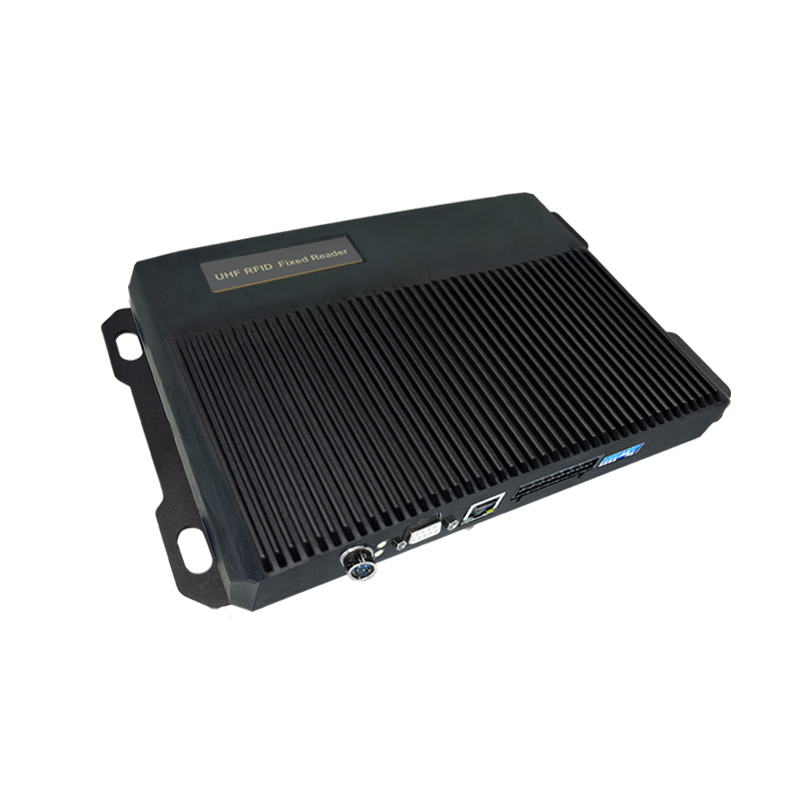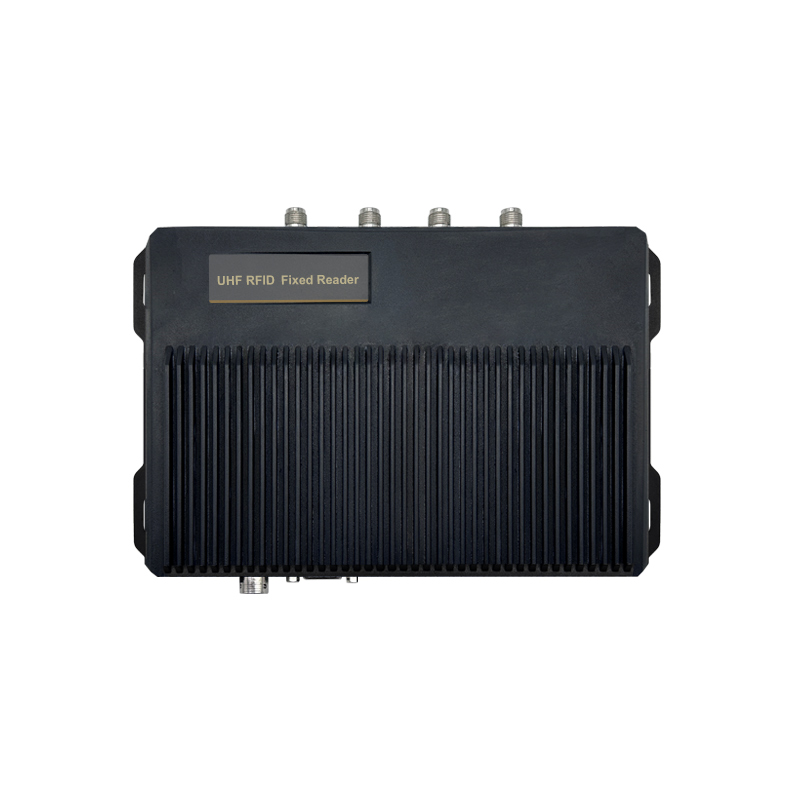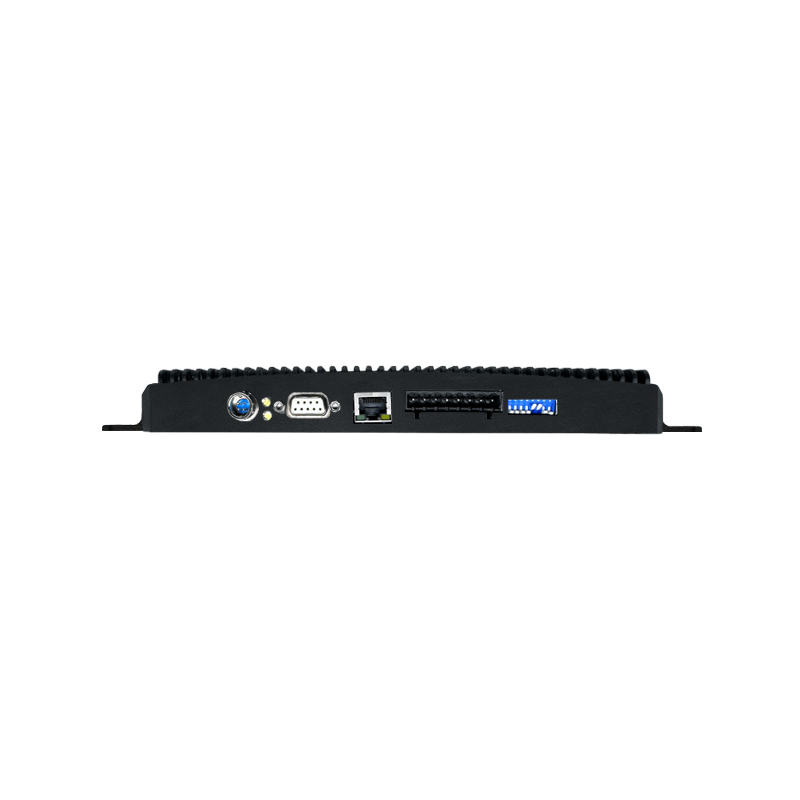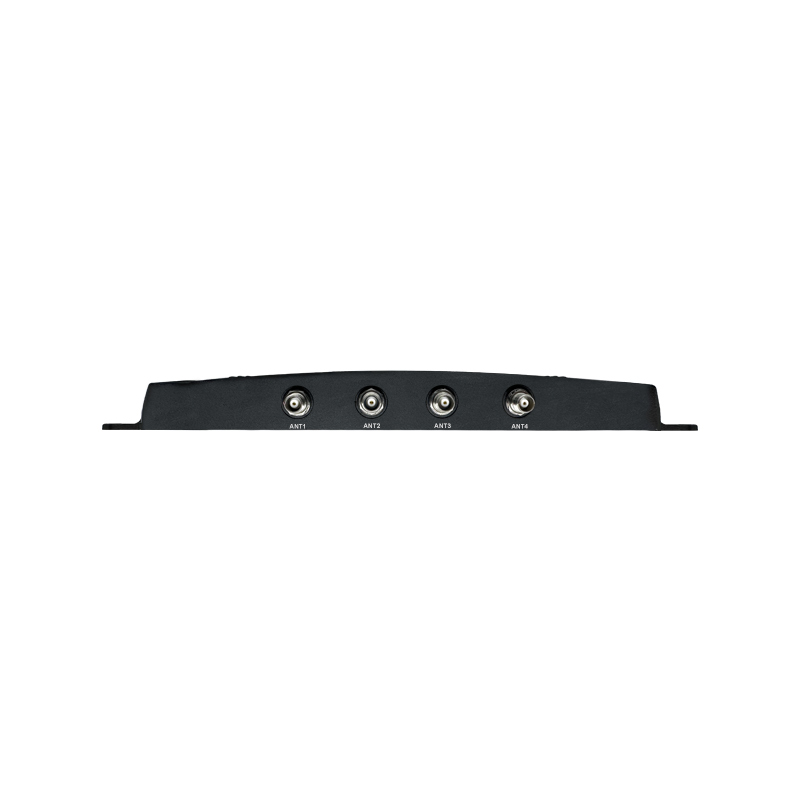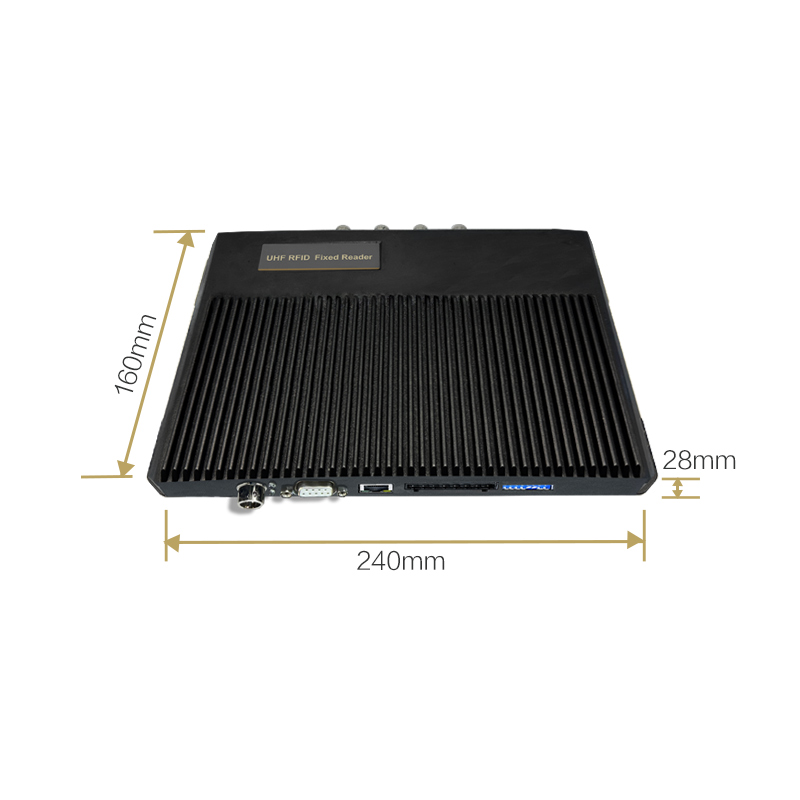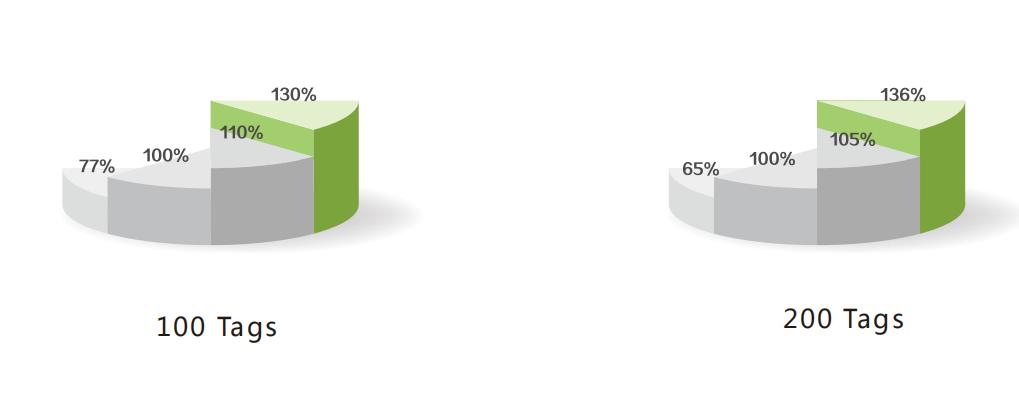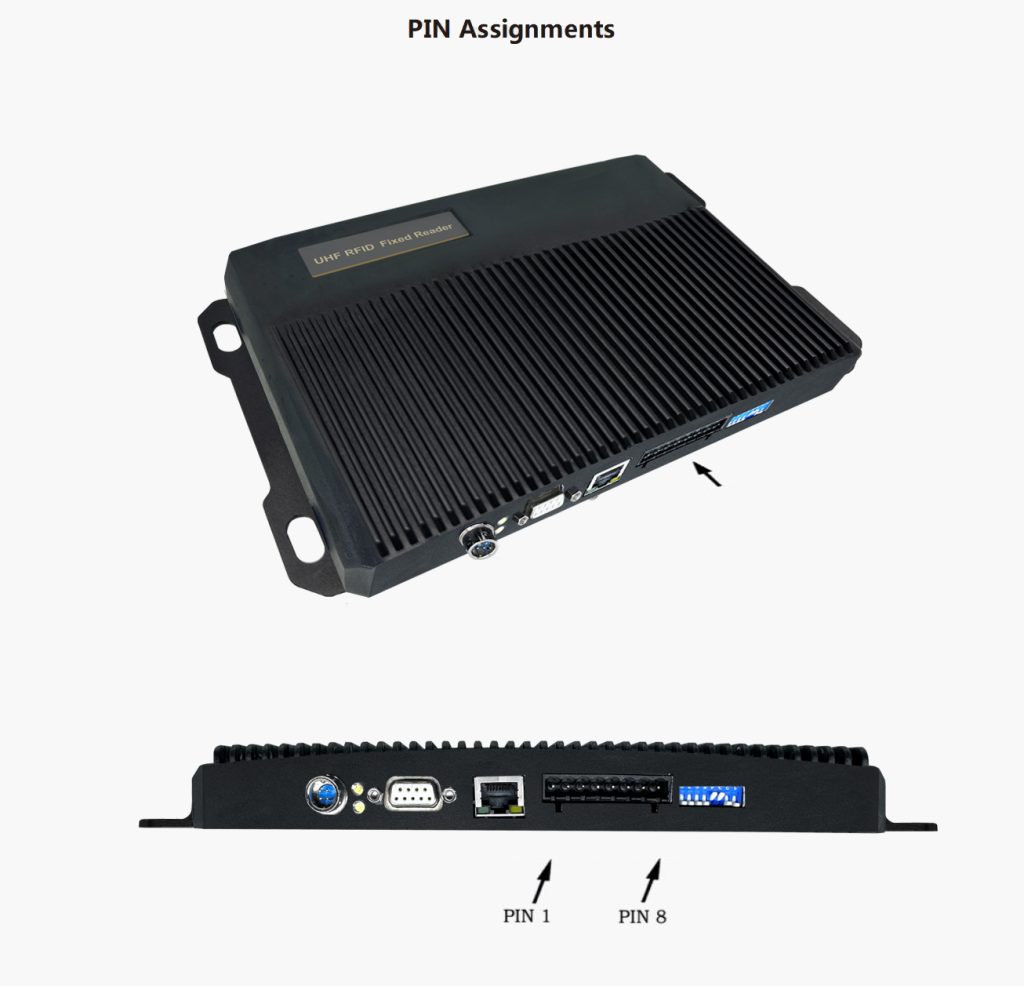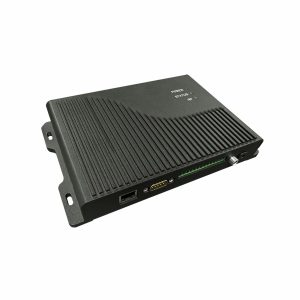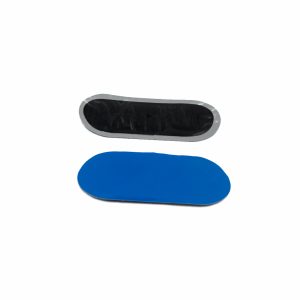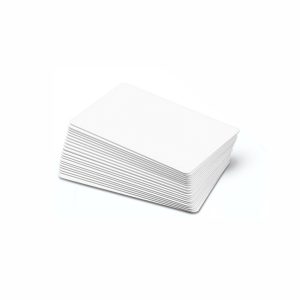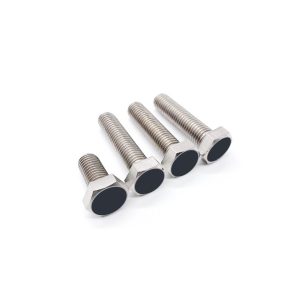RS-PR01 Fixed Four-Port UHF RFID Passive Reader
RS-PR01 is a new designed fixed UHF RFID reader with 4 ports for antennas, Impinj E710 chipset, support multiple tags reading up to 700 times/second, 0-15 meters long range reading.
Widely used for asset management, inventory/warehouse management, vehicle ETC management etc.
Functions
- 902-928Mhz FCC, 866-868Mhz CE, other frequency selectable
- Connect 4 antennas outside, TNC/RP-TNC connector
- Support standard RS-232, Ethernet communication interfaces
- Impinj E710 RFID chip, fast and accurate reading rate
- 18000-6B/6C full compatible
- Multi-reader operating under intensive environment
Applications
- Warehouse logistics, supply chain management
- Vehicle parking, intelligent weighing
- E-Toll on highway
- IT asset inventory management
- Industry 4.0 smart manufacturing
Recommended Customers
- System integrators
- RFID distributors
- Software developers
- High-end customers
Key Features
Feature | Descriptions |
Impinj E710 Built-in | Impinj Indy E710 chip as RF transceiver |
Anti-collision Algorithm | Unique I – Search multi-tag identification algorithm providing the highest efficiency. |
Optimized Algorithm for Tags with Small Volume | Optimized applications for small volume with better tags respond time. |
Dual CPU Architecture | Main CPU: tag inventory; Assistant CPU: data management. Tag inventory and data transfer are parallel and simultaneous. |
Fast 4-Antenna Switch Inventory | Every antenna’s inventory duration is configurable (Minimum Duration: 30 ms). Polling from ANT 1 to ANT 4. |
Two Modes for Inventory | Buffer mode and Real-time mode. Tags will be stored as buffer under buffer mode. Tags will send data under real-time mode. This mode allows user to get tag data instantly. |
Hardware System Halt Detection | Hardware CPU status surveillance. Run for 24 hours X 365 days without system halt. |
PA Health Surveillance | PA status surveillance. Make sure PA never works under saturated state. Protected it for long term operation. |
18000-6B/6C Full Compatible | It can be switched rapidly between 18000-6B and 18000-6C tag. |
18000-6B Large Data Read/Write | Read 216 bytes in one time taking less than 500ms. Write 216 bytes in one time taking less than 3.5 seconds. It can read/write data with different lengths. |
Antenna Connection Detection | Detect antenna connection. Protective for RF receiver. It can be cancelled with command. |
Temperature Sensor | Multi-point surveillance for accurate operating system temperature. |
Power Output Correction | Dual modules making sure output power can be fine adjusted. Dual modules working and keeping correction. |
Excellent Cooling Design | Heat dissipation and large cooling surface design. Thermal coupling interfaces using high-thermal conductivity solid materials which ensure stable performance under high temperature. |
Electrical Parameters
Electrical Parameters | |
Dimension | 240(L)*180(W)*28(H)mm |
Weight | 1.2kg |
Body Material | Die-cast aluminum |
Input Voltage | DC 12V ~ 18V |
Standby Mode Current | <80mA |
Sleep Mode Current | <100uA |
Max Operating Current | 700mA +/-5% @ DC 12V Input |
Operating Temperature | – 20 °C ~ + 85 °C |
Storage Temperature | – 20 °C ~ + 85 °C |
Humidity | 5%RH – 95%RH (non -condensing) |
Interface Protocol | EPC global UHF Class 1 Gen 2 / ISO 18000-6C / ISO 18000-6B |
Spectrum Range | 902MHz – 928MHz,865MHz – 868MHz, other is optional |
Supported Regions | US, Canada and other regions following U.S. FCC Europe and other regions following ETSI EN 302 208 Mainland China, Taiwan, Korea, Malaysia |
Output Power | 0 – 33dBm |
RF Connector | TNC/RP-TNC |
Output Power Precision | +/- 1dB |
Output Power Flatness | +/- 0.2dB |
Receive Sensitivity | < -85 dBm |
Peak Inventory Speed | >700 tags/sec |
Tag Buffer Capacity | 1000 tags @ 96 bit EPC |
Tag RSSI | Supported |
Antenna Detector | Supported |
Ambient Temp Monitor | Supported |
Working Mode | Single/DRM |
Host Communication | RS-232 or TCP/IP |
GPIO | 2 input optical coupling & 2 output coupling |
Baud Rate | 115200 bps/38400bps |
Heat Dissipation | Air cooling |
Anti-Collision Algorithm Comparison
Notes
1.) The test is on the same hardware platform in real applications (Taking Impinj dynamic Q algorithm as the reference which is marked with 100%).
2.) The chart shows the comparison for the first round inventory performance.
3.) It is tested on the same hardware platform.
Algorithm | Description |
Standard fixed Q algorithm | • Standard 18000-6C algorithm. • The performance is reduced significantly when tag quantity gets larger. • The efficiency is not high when tag quantity is small. |
Impinj dynamic Q algorithm | • The algorithm of Impinj. • It has a good efficiency for various tag quantities. • It sacrifices some performance for the sake of compatibility |
I–Search dynamic Q algorithm V1.0 | • Based on Impinj dynamic Q algorithm. • The performance is optimized. • It’s the algorithm for firmware version 6.6 or below. |
I–Search dynamic Q algorithm V2.0 | • Based on Impinj dynamic Q algorithm. • It’s a brand new data structure, the performance of which is significantly improved for firmware version 6.7 or above. • The improvement of performance can be easily sensed after the first round of inventory especially when the tag volume increases. |
PIN Assignments
Our Services
- Wondering if our RFID Solutionscan suit you? Finding out is simple.
- We are offeringfree testing on your sample materials to run through with our equipment in our RSTC Lab. (You just need to provide testing equipment and sample)
- We supply customers with better product, quicker response, more value-added expertise service.
- We provide personalized customization services, such as printed logo, software and hardware customization etc.
Requirement Docking
01
Requirement Docking
02
Requirement Docking
03
Requirement Docking
04
Requirement Docking
05
Requirement Docking
06
Requirement Docking
07
Requirement Docking
08
Requirement Docking
09
Get a Quote


